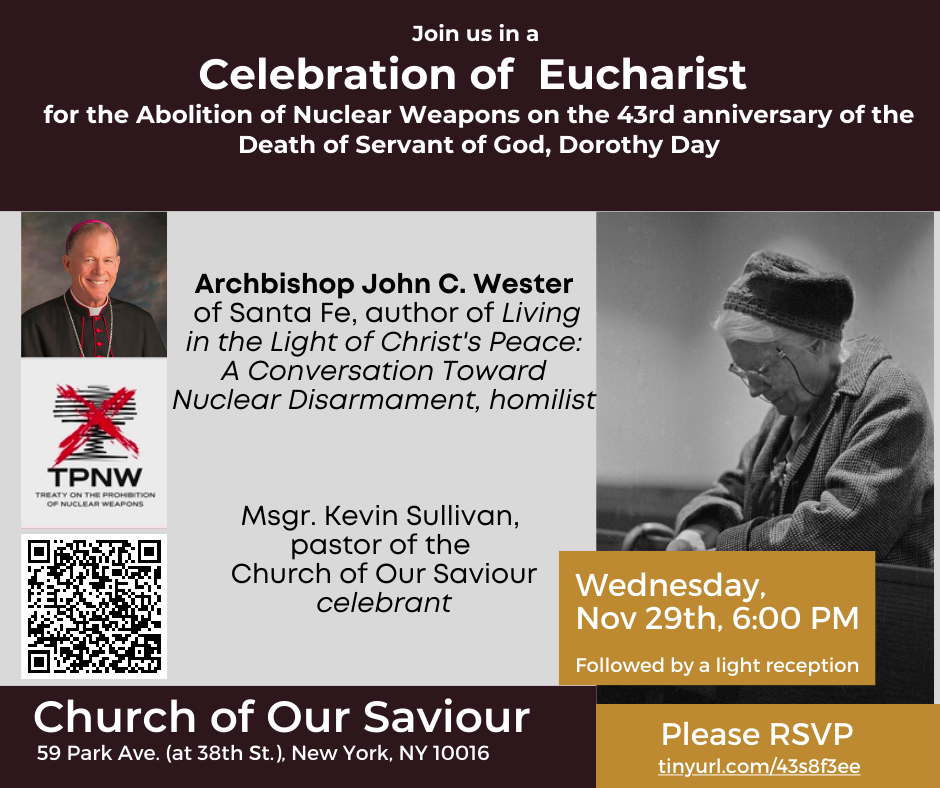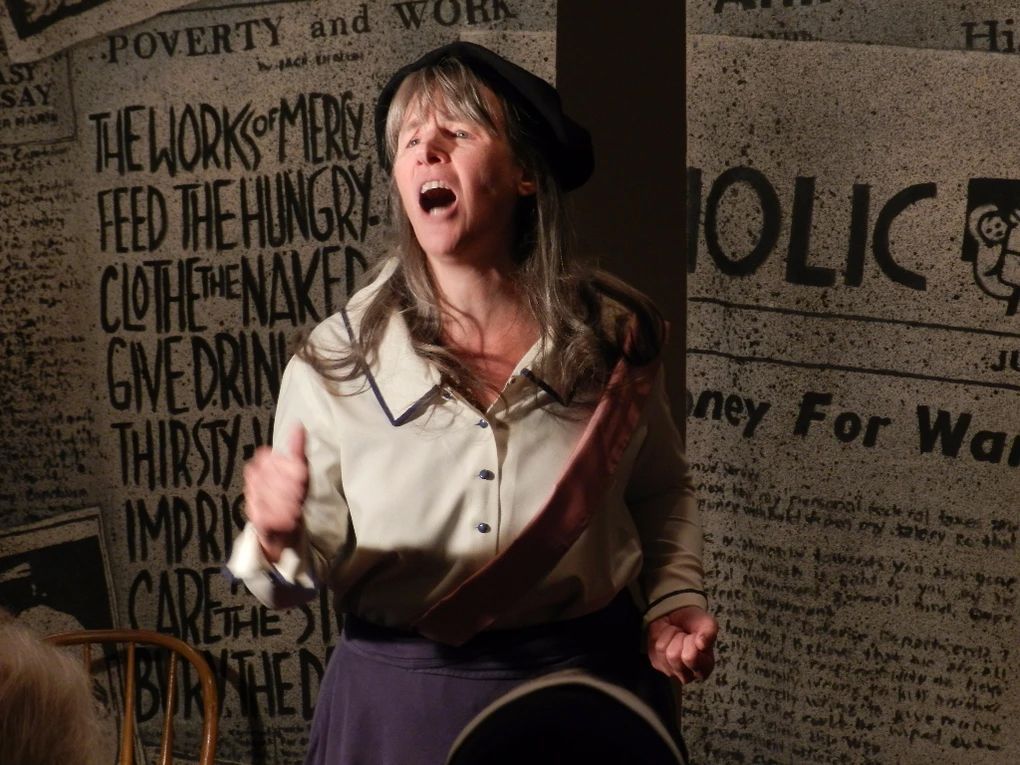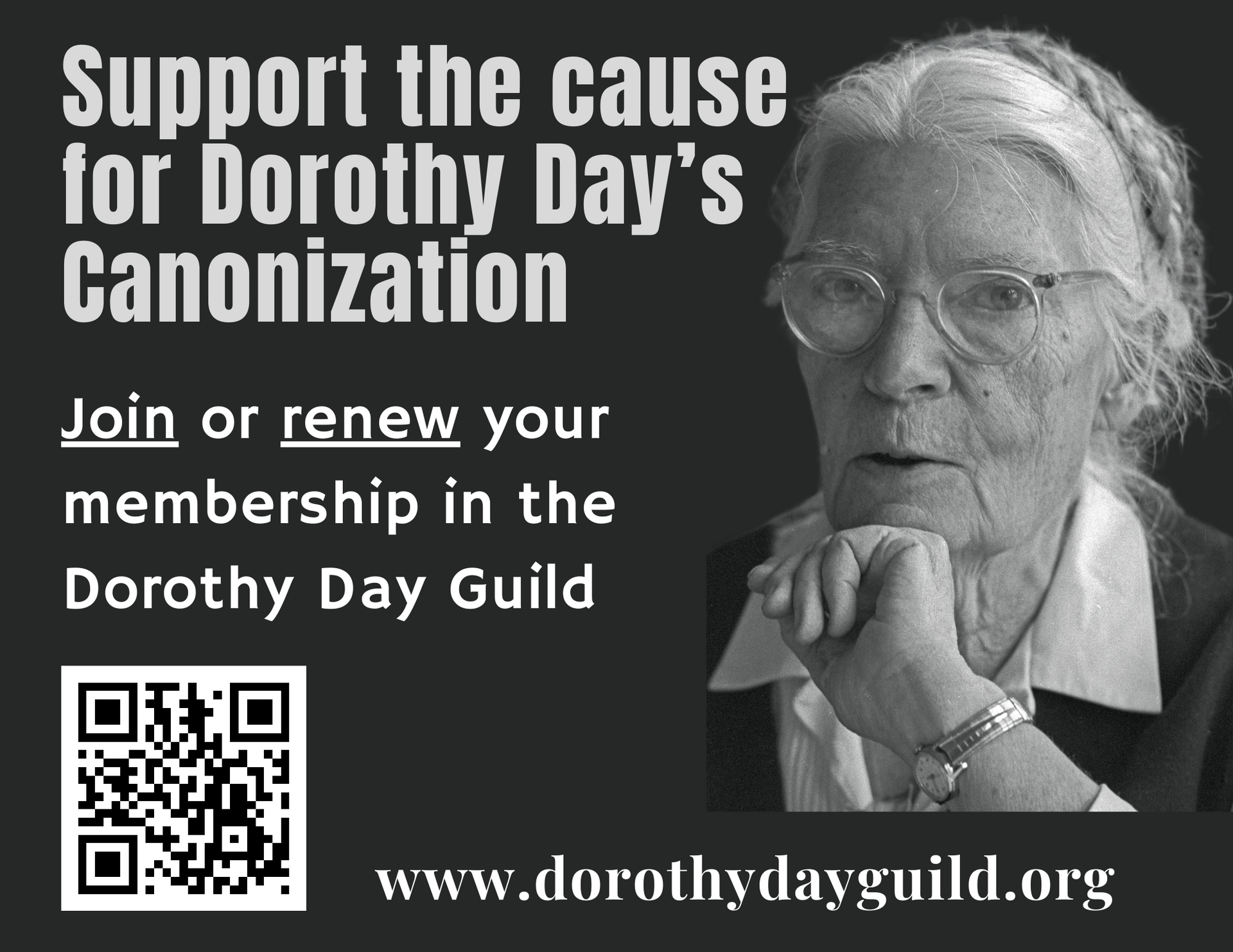PHONE
555-555-5555
ADDRESS
Dorothy Day Guild
1011 First Avenue, Room 787
New York, NY 10022
Dorothy's Anniversary: Mass and a BIG canonization update!
Dear friends and members of the Dorothy Day Guild,
Greetings in these last days of Ordinary Time! We hope that you all had a blessed Feast of Christ the King on Sunday, and for our American readers, a very happy Thanksgiving. November is a special month for the Dorothy Day Guild, marking the anniversaries of both Dorothy’s birth in 1897 and her death in 1980. On Dorothy’s birthday, November 8th, we were delighted to announce the launch of our new website, which features increased accessibility, a complete archive of the Guild’s past events and publications, and more. Thank you so much for the kind messages we’ve received in regards to the new site! If you missed the letter we sent out for Dorothy’s birthday, you can read it here as part of our new blog.
In preparation for Dorothy’s anniversary of death on Wednesday, we have a lot to share with you, including a major update on Dorothy’s canonization cause! We just couldn’t keep this under our hats for another month, so keep reading, but first, we wanted to remind you of our final in-person event for the year:
Upcoming Events and Opportunities:
Wednesday, November 29th marks the 43rd anniversary of Dorothy’s death in 1980. To mark this date, which we hope will someday be Dorothy’s feast day on the universal calendar of the Church, the Dorothy Day Guild is co-sponsoring a Mass for the Abolition of Nuclear Weapons at the Church of Our Savior (59 Park Avenue, New York, NY) at 6:00 pm. We are so excited to welcome Archbishop John Wester, of Santa Fe, who will offer the homily and concelebrate with Monsignor Kevin Sullivan, of Catholic Charities of New York. We hope that many of you will be able to join us for mass, and for the reception which will follow. Please RSVP using this form if you haven’t already done so. For those who aren’t able to attend, a number of Catholic Worker communities, including Maryhouse in New York, and St. Peter Claver House in South Bend, will also be celebrating mass that evening, so feel free to check with your local CW house and see if there are any anniversary celebrations to join. Wherever you are, let’s be united in prayer on Wednesday for a world free from nuclear weapons and safe from the threat of nuclear war!
Beginning on Wednesday, we also invite you to pray a novena with us. As Dorothy wrote in The Long Loneliness, “Every Catholic faced with a great need starts a novena.” A novena is a prayer practice which takes place over nine days, often beginning on a saint’s feast day and asking for that saint’s intercession. When we pray a novena, we might have a specific intention in mind, or we might ask for God’s assistance and blessing in a more general way. Novenas are a beautiful spiritual practice which helps us grow in persistence, consistency, and purpose in our prayer lives. This novena begins on the anniversary of Dorothy’s death and continues through the Feast of the Immaculate Conception. We will be posting the novena prayers and reflections each day on our Facebook and Twitter pages. Our world has many great needs, and over the next week and a half we invite you to offer the needs of your family and friends, your neighbors, your nation, and our world to God through Dorothy’s intercession. Know that all of us at the Guild will be praying along with you. At the close of the novena, if you feel you have received any special grace or favor, please feel free to share them with us using the form on our website. Praying through Dorothy’s intercession is a wonderful way to grow closer to God and to the poor as well as help the cause for her canonization. We’re very grateful for your support, and it’s an honor to pray alongside you!
December will also mark the final days to experience Kristi Pfister’s installation, “Radical Action: Tracing Dorothy Day” in the O’Malley Library at Manhattan College in the Bronx. The show closes on December 16th, so find more details on our events page and come check it out! It’s been an incredible gift to have this stunning installation on display at the Guild’s new home throughout the fall semester. Thanks again, Kristi, for your generosity in sharing your work with all of us!
Other events:
This month marked a number of other events celebrating Dorothy’s legacy across the United States. On the west coast, Fumi Tosu, of Dandelion House Catholic Worker in Portland, Oregon gave a talk at the University of Portland for Dorothy’s birthday on November 8th. You might remember Fumi from our June issue of “In Our Time,” where he wrote about finding a liturgy of hope in the weekly rhythms of the Catholic Worker house. In his address to the students, which you can view here, on the University of Portland website, Fumi introduced his audience to the narrative of Dorothy’s life and spoke about how his community works to follow her example of gentle personalism, relationship, and community building, which recognizes the dignity and presence of God’s image in each of their guests.
In the Midwest, Lisa Wagner-Corollo presented her one-woman show, “Haunted By God: The Life of Dorothy Day” on November 15th and 16th at Christ Our Light parish in Princeton, Minnesota. Lisa has brought this show to schools, parishes, and Catholic Worker houses across the United States, as well as to the Pax Christi International Conference in Assisi, Italy, and the World Parliament of Religions in Cape Town, South Africa to rave reviews. Your parish or university could be next! To find out how you can bring this wonderful show to your community, visit
the Still Point Theatre Collective’s page and contact Lisa.
On the east coast, Guild co-chair Kevin Ahern gave a talk on November 16th at Catholic University of America entitled “A Eucharistic Pilgrimage: Dorothy Day’s Quest for Holiness and Social Action,” and members of the Communion and Liberation movement also set up a temporary exhibit celebrating Dorothy’s life and legacy. Former Guild coordinator Jeffry Korgen also spoke at Seton Hall University on November 20th and offered students an overview of Dorothy’s life and some sneak peaks of his forthcoming graphic novel-style biography of Dorothy Day, entitled Dorothy Day: Radical Devotion. We are so excited to see this book in print and look forward to sharing updates with you as the September 2024 publication date draws closer!

If your community or organization is planning an event focused on Dorothy’s life and legacy, please let us know. We would love to help you promote it!
Reading, Watching, and Listening Recommendations:
It’s been great to see the many articles in various Catholic publications that have been published this month, and we’ve enjoyed seeing the different ways that Dorothy speaks to various corners of the Church. Particularly in this time of eucharistic revival in the United States, it’s been edifying to hear how different clergy members, theologians, and Catholic Workers have understood Dorothy’s eucharistic devotion. Bishop David. M. O’Connell of the diocese of Trenton released this short video on November 16th featuring a few of Dorothy’s most profound quotations on the sacrament as part of a series of “Eucharistic Moments.” John Cavadini of the McGrath Institute for Church Life at the University of Notre Dame also published a powerful article in Commonweal on November 23rd, entitled “The Eucharist and the Poor: The Real Meaning of the Real Presence.” John has written on Dorothy before (his wife is a former member of the New York Catholic Worker community!), and we loved his explanation of what he calls “eucharistic realism.” This is a wonderful, highly readable explanation of the implications of the Real Presence. If we believe that Christ is truly present in the sacrament, then we believe and live out, as Dorothy did, the necessary corollary that “the eucharist commits us to the poor.”
We also enjoyed this November 15th article in Our Sunday Visitor by David Mills,
“How Dorothy Day Learned Sainthood Comes in All Sizes,” on the love and admiration Dorothy developed for St. Thérèse of Lisieux. We know that many of you, like Dorothy, have strong devotions to St. Thérèse and might know that Dorothy wrote a biography of the Little Flower that was published in 1960 (shout-out to our October Thérèse reading group!). Thanks to David for sharing how Dorothy’s ability to see holiness everywhere was honed through her appreciation of Thérèse’s “Small Statement” sanctity. If you’re interested in learning more about Dorothy’s devotion to the Little Flower, the Guild has
a mini-lecture series on Dorothy’s Thérèse posted on our YouTube channel.
Speaking of YouTube, we just added two educational webinars to our channel.
“Dorothy Day and the Global Church,” is a panel which features Catholic Workers from the Netherlands, the Philippines, Australia, and France in conversation on how they have adapted Dorothy’s peace witness and practices of friendship with the poor to their own cultural contexts. It has been thrilling to see how Dorothy’s legacy has spread beyond her home in the United States. This conversation, which the Guild was very proud to co-sponsor on the 72nd anniversary of Peter Maurin’s death, originally included participants from twenty different countries! I was especially touched by panelist Henry Simonin, of Le Dorothy cafe in Paris’ assertion that Dorothy has something to say to the French Church, certainly a community that Dorothy felt very close to in life through her long friendship with Peter.
“Dorothy Day and the Radical Vocation of a Journalist,” the eighth annual Dorothy Day lecture, which the Guild co-sponsored at Manhattan College in 2022, is a phenomenally insightful and timely conversation featuring journalists Eileen Markey, Melissa Cedillo, and Guild advisory committee member Colleen Dulle. Dorothy’s work outside of the Catholic Worker and the peace movement hasn’t historically received the level of intellectual attention and analysis it warrants, and yet, as Eileen points out, Dorothy’s vocation as a journalist preceded her conversion to Catholicism and deeply informed her later efforts. Particularly in a time when journalists in conflict zones like Gaza are being targeted, we are grateful to Eileen, Melissa, and Colleen for illuminating how Dorothy understood the task of witnessing to injustice and resistance in writing, and how journalism can function as a spiritual work of mercy.
Enormous thanks to Dr. Kevin Ahern for convening these two panels! Both webinars are fully subtitled, and we especially recommend them to those of you who teach in parish and school/university contexts. Over the coming months, the Guild looks forward to building out its collection of free educational materials in various formats. If you use any of our resources in your classroom or community group, please let us know, and let us know what else you would be interested in seeing from us!
Canonization Update:
We can’t wait anymore! We have an amazing update to share with you on Dorothy’s canonization! Earlier this month, our Guild steering committee met with our postulator, Waldery Hilgeman, who gave us the fantastic news that the Dicastery for the Causes of Saints has appointed a relator for our cause! Monsignor Maurizio Tagliaferri, who oversees a number of American sainthood causes, including those of Venerable Augustus Tolton and Servant of God Julia Greeley, will work closely with Dr. Hilgeman in this next phase of the inquiry into Dorothy’s life of heroic virtue. As our relator, Monsignor Tagliaferri will analyze the materials that were prepared during the diocesan phase of the canonization inquiry in order to write a positio and present it to the Dicastery for review. Once the officials of the Dicastery have made their decision, the way is clear for Pope Francis to declare Dorothy ‘Venerable’.
For me, joining the Guild staff this year has been an incredible learning experience, particularly as it relates to the official Vatican process of recognizing saints! In our December issue of “In Our Time,” we look forward to providing you with a more detailed explanation of the relator’s role in the canonization process and an outline of the next steps based on what we have learned from Dr. Hilgeman. Keep your eyes out for our “Dispatches” column next month! In the meantime, we are overjoyed to have Monsignor Tagliaferri’s expertise moving Dorothy’s sainthood cause forward– what a gift to us for Dorothy’s birthday and anniversary month!

As we enter a new stage in the canonization process, we need your support in three ways. First and foremost, your prayers fuel everything we do, both here at the Guild and in Rome. Without prayer, Dorothy’s canonization cannot move forward. Please continue to pray for those who are working on Dorothy’s cause at the Vatican and ask God to guide their work, especially in the preparation of the positio. Please also continue to pray through Dorothy’s intercession, trusting that she will bring your needs and the needs of your communities before God as she did so faithfully in her lifetime. If God reaches out to you in a special way as a result of these prayers, please let us know. These testimonials and accounts of graces, favors, and potential miracles received are vital for the canonization process.
Second, we need help spreading the word about Dorothy’s life and witness! Please share our Guild materials with your friends by passing along this email and our newsletter, and share
Dorothy’s writing
with those who are looking to learn more about her legacy of nonviolence and voluntary poverty. You can also help by attending a Guild event,
requesting a speaker on Dorothy for your organization, sharing our website on social media, or
requesting prayer cards to distribute in your communities. We’re also in need of volunteers, particularly those who are able to help with fundraising, translate Guild materials into other languages, especially Spanish, and organize educational events, so please reach out to us if you are able to offer your gifts in these and other areas.
Finally, we are in need of financial support. We would like to take this opportunity to invite each of you who have not yet become members of the Dorothy Day Guild to join the Guild today. The Guild is responsible for the daily operations of our office in New York as well as costs associated with the canonization process, and we receive regular bills from the Dicastery and our postulator. Your membership dues and small, grassroots donations are an enormous help in offsetting these costs, and it is because of you that we were able to revamp our website, publish two issues of our digital newsletter, move our office to Manhattan College, and host six completely free in-person and online events this year alone. To all of our members, thank you so much for your support.
A few words from Dorothy:
In our work at the Dorothy Day Guild, we have often referred to Dorothy as first and foremost “a woman of conscience.” Dorothy lived her life in fidelity to her conscience, the place where she understood that the Holy Spirit would speak with her and guide her, and she encouraged those close to her to do the same. The recognition of conscience as a persistent and trustworthy guide is perhaps Dorothy’s greatest contribution to the moral theology of the universal Church. During the second Vatican Council, Dorothy and a group of Catholic women from around the world prayed and fasted outside the council chambers in Rome to draw attention to the dangers of nuclear weapons and the status of conscientious objectors. It is in part due to Dorothy’s advocacy that conscientious objection as a moral possibility for lay Catholics was written into Gaudium et spes during Vatican II. This marked a major shift in the Church’s social doctrine and an early step towards privileging Gospel nonviolence as the most Christ-like response to conflict, a trend which has continued in the US Bishops’ pastoral letter “The Challenge of Peace” and Pope Francis’ social encyclicals. Dorothy fearlessly examined her own conscience, asking herself if she could let go of the desire to be right, if she could be more patient, if her own purchasing habits and those of her community truly supported the common good, if they might be able to do with a little less so that others might have what they needed to survive. In her December, 1948
“On Pilgrimage” column, she reminds us of the working conditions of migrant agricultural workers in Arizona and Texas and of resource extraction in the Congo, which continues to this day. The embrace of voluntary poverty frees us from participation in these cruel systems, and helps our brothers and sisters who are trapped in these exploitative workplaces to free themselves as well. “Poverty means non-participation,” she tells us. “Poverty means not riding on rubber while horrible working conditions prevail in the rubber industry.” Advent, Dorothy reminds us, is the perfect time to engage in this examination of conscience and to wait upon God’s word. Later in the same column, she writes:
ADVENT IS a time of waiting, of expectation, of silence. Waiting for our Lord to be born. A pregnant woman is so happy, so content. She lives in such a garment of silence, and it is as though she were listening to hear the stir of life within her. One always hears that stirring compared to the rustling of a bird in the hand. But the intentness with which one awaits such stirring is like nothing so much as a blanket of silence.
Be still. Did I hear something?
Be still and see that I am God.
Zundel, in Our Lady of Wisdom, has some beautiful passages on silence:
Do we understand at last that action must be born in silence, and abide in silence, and issue in silence, and that its power must be an emanation and the radiation of silence, since its sole aim is to make men capable of hearing the Word that silently reverberates in their souls?
All speech and reasoning, all eloquence and science, all methods and all psychologies, all slogans and suggestions are not worth a minute of silence in which the soul, completely open, yields itself to the embrace of the Spirit…
Behold, how small a fire, how great a forest it kindles.
As we enter this holy time of year, with the anniversary of Dorothy’s death on Wednesday, and then Advent, with its feast days and antiphons in preparation for Christ’s birth into the world, please join us in praying for peace. Let us be united in prayer on November 29th for the complete abolition of nuclear weapons and an end to our relentless preparation for war, and throughout the Advent season, please join us in praying for an end to armed conflicts in the Congo, in Sudan, in Ukraine, and especially in Palestine and Israel, in the birthplace of Jesus. In the silence and stillness of Advent, may God speak to us, and may Christ be born again into our waiting world.
In peace,
Dr. Casey Mullaney, on behalf of the Dorothy Day Guild
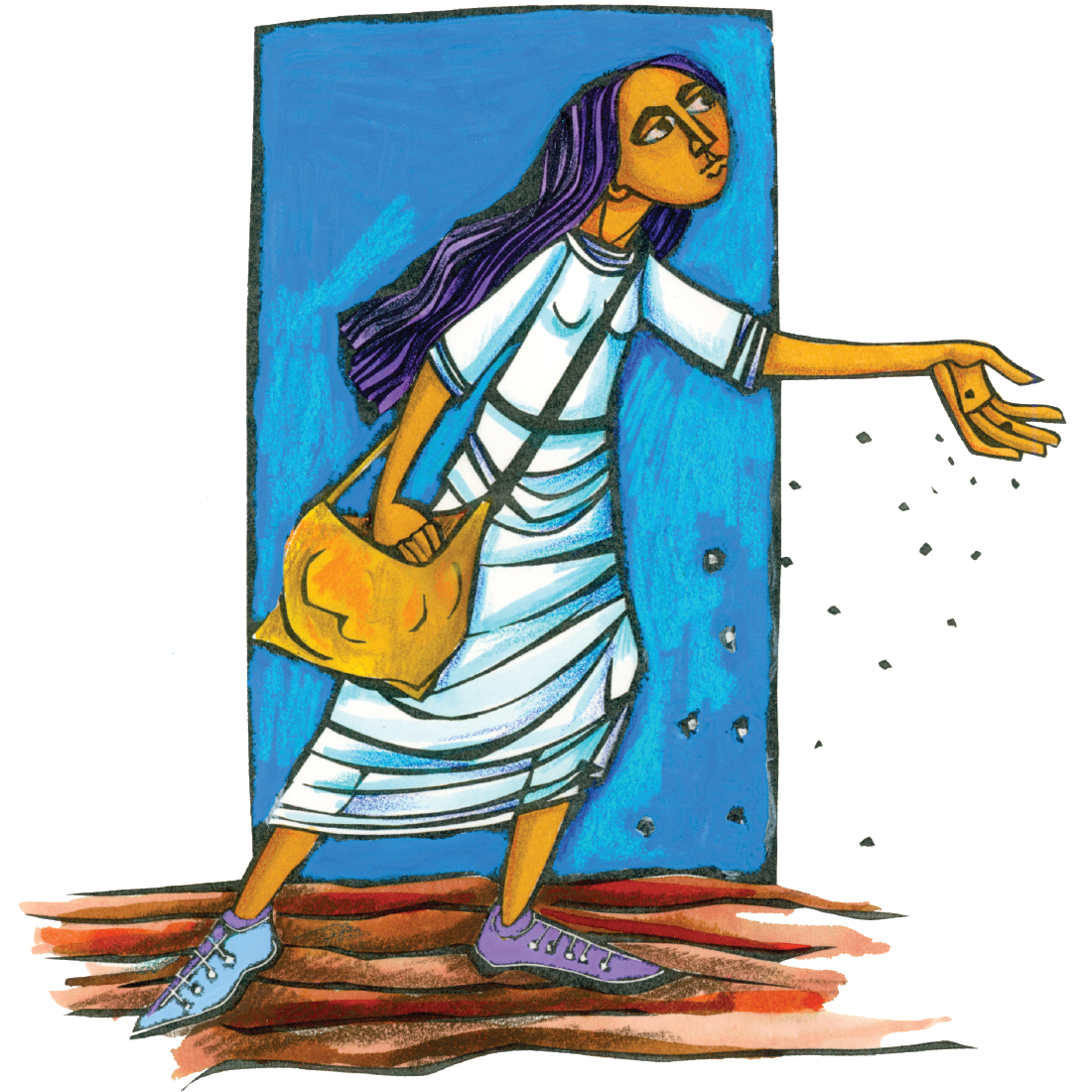
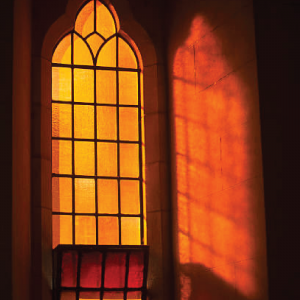
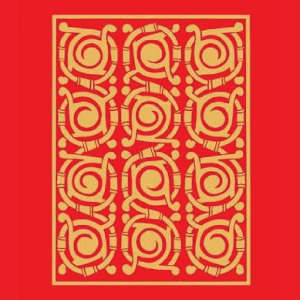
A Woman of Conscience, a Saint for Our Time
The Dorothy Day Guild supports and advances the cause for canonization of Dorothy Day, initiated by the Archdiocese of New York as a saint by the Roman Catholic Church, and promotes, for the benefit of all people interested in social justice, awareness of Dorothy Day, her writings, the Catholic Worker Movement she co-founded, and her life and witness to the Gospel.
QUICK LINKS
© 2023 All Rights Reserved | Dorothy Day Guild | This site is powered by Neon One


